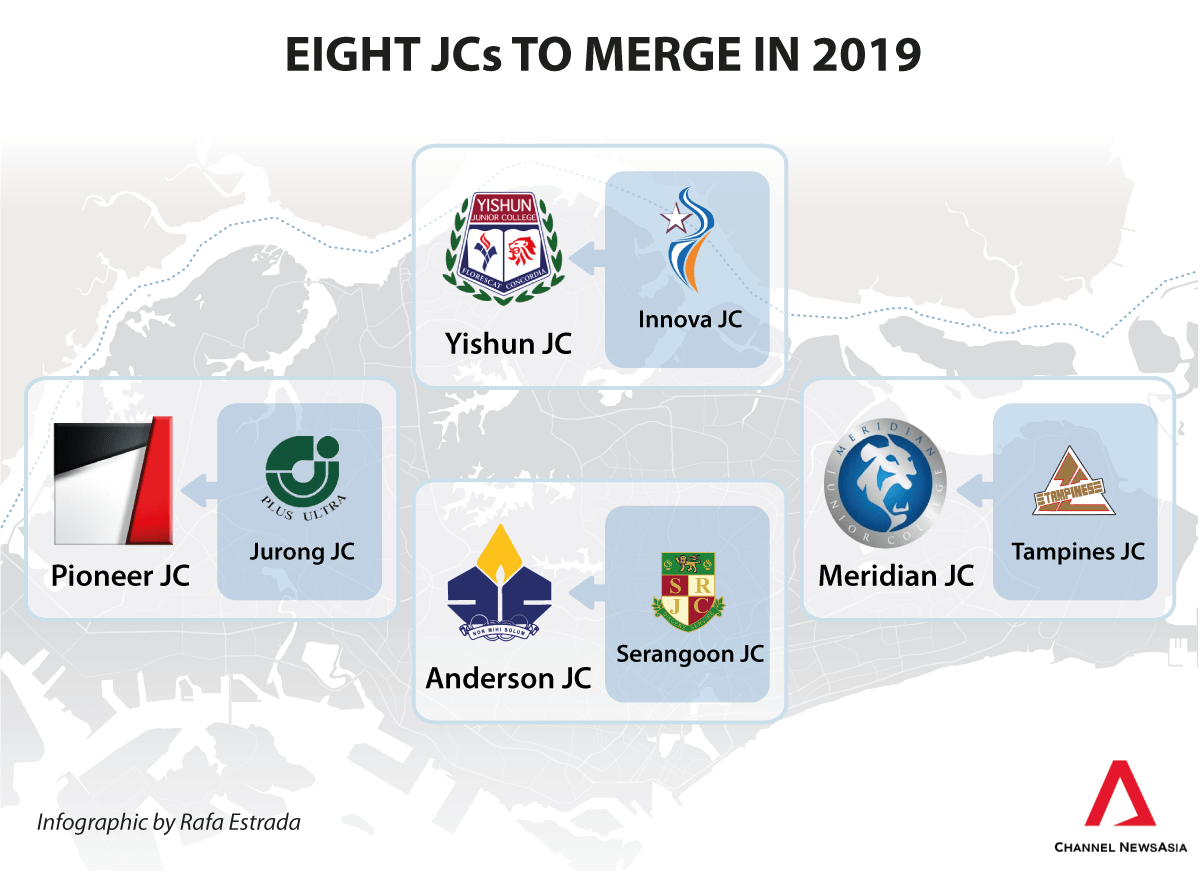TL;DR – Teachers are working people too.

Social media was all abuzz yesterday with news of the merger of schools yesterday, especially with that of eight government Junior Colleges.
The common misconception about schools that merge is that these schools are failing schools. The merger of these schools over the years are not because of the performance of students or educators, but are a result of the demographic changes happening over the years.
As the workforce progressed over the years, the number of births has reduced significantly. From a high of over 50,000 live births between the 80s and 90s, Singapore’s live births have dropped to an average of 37,000 in recent years. This eventually leads to the reduced number of children entering schools today.

The schools which were built to meet the population increase of the 80s and 90s has thus not match the reduced cohort today. In economic terms, the supply of schools has exceeded the demand.
Still, the Education Ministry has assured that the it will still be able to meet the expected demand for admissions into JCs with the merger.
Another reason cited by the ministry is the moving away of families from mature estates to newer estates like Punggol and Sengkang, in the North-East.
But how does all this affect school activities and curriculum?
The need for mergers
When the population of a school goes down, it will affect not only the school experience, but also the number of Co-Curricular Activities (CCAs) and more importantly the number of Subject combinations.
In other words, because the number of students have reduced, the school can no longer effectively offer a good variety of subject combinations and interesting CCAs for students to select, leading to a less vibrant learning environment.
Hence the need for mergers to happen, in order for students to have more subjects and CCA options.
But as with mergers and acquisitions in the corporate world, the employees will be affected. And in this case, the teachers and administrative support staff will be the affected ones too.
The Singapore Teachers’ Union has expressed that it is “particularly concerned this time as it is the first time JCs are being merged.”
(The Singapore Teachers Union’s response on this matter is reproduced in full here)
STU’s RESPONSE TO MOE’s ANNOUNCEMENT ON SCHOOL MERGER EXERCISE
STU acknowledges the need for school mergers in light of changing national demographics. We are particularly concerned this time as this is the first time JCs are being merged. We know there are concerns from Teachers on their new work environment, especially Teachers who might have to be redeployed to teach in Secondary or Primary schools or even being posted to HQ.
The advance notice allows STU to engage with MOE on our members’ feedback. STU has been briefed by MOE on the merger exercise and would be meeting affected members in the upcoming weeks.
Professional dialogues should take place to consider our members’ concerns in their future deployments. Any transfer would not be easy, especially for Teachers who have been teaching in the same school for a long time.
Affected Teachers should also be given ample time to be trained for conversion, if required. There ought to be a fair representation of Key Personnel and School Leaders from both schools/JCs in the merged entities.
STU will also be providing assistance and Counselling support for its members who might encounter issues with deployment and adapting to their new school environment. Members who have queries can contact STU via stu@stu.org.sg”
An STU member who has been teaching in one of the affected JCs for more than 5 years shared this,
“It will be hard for JC teachers to be deployed to secondary or primary schools…especially if they are teaching Economics and very few schools offer ‘O’ level Economics.”
“Although we have been assured that we will not be retrenched but what is probably unsettling for us is the thought of having to go down to secondary schools or primary schools…going to HQ is not a long-term solution as we can only stay in HQ for 2 to 3 years…”
STU President Mr Mike Thiruman took to Facebook to express his concern:
So, it is rather apparent that there hasn’t been open communication about the issue of the merger to the teachers and the union.
We shall see.

10 excess schools (Pri & Sec) after merger means about 1000 teaching staff in excess and that is a lot within a year. Guess the APEX posting applications this year will be flooded with unprecedented numbers of applicants. Wonder where will they settle when 2019 comes? Sad to see so many are affected and expected to ride with the winds of change.